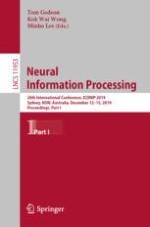2019 | OriginalPaper | Buchkapitel
ConvCaps: Multi-input Capsule Network for Brain Tumor Classification
verfasst von : Yiming Cheng, Guihe Qin, Rui Zhao, Yanhua Liang, Minghui Sun
Erschienen in: Neural Information Processing
Aktivieren Sie unsere intelligente Suche, um passende Fachinhalte oder Patente zu finden.
Wählen Sie Textabschnitte aus um mit Künstlicher Intelligenz passenden Patente zu finden. powered by
Markieren Sie Textabschnitte, um KI-gestützt weitere passende Inhalte zu finden. powered by
